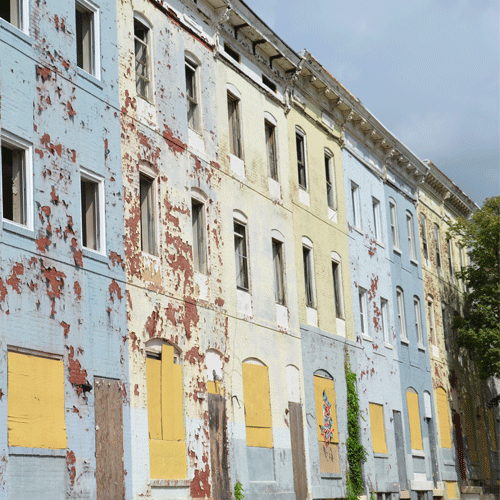
William C. Sullivan, Jr.
Partner
201-896-7215 wsullivan@sh-law.comFirm Insights
Author: William C. Sullivan, Jr.
Date: February 14, 2013

Partner
201-896-7215 wsullivan@sh-law.comThe new regulations also amended the Flood Hazard Area Control Act (“FHACA”) regulations in light of the devastation caused by Superstorm Sandy. In summary, these regulations accomplish the following:

As explained by the Governor’s Office, elevating buildings out of the “A” or “V” zones as depicted on these maps will save the average property owner tens of thousands of dollars in flood insurance premiums.
Although these maps are advisory from FEMA’s perspective and are to be finalized within the next year, they are being used by the State as the foundation for these new regulations. The maps can be viewed at www.region2coastal.com.
NJDEP did not amend the existing regulatory prohibition of multi-family residential development or the discouragement of commercial development in the “V zone.” The new maps include significant areas of new “V zone” in places as diverse as downtown Jersey City and Bay Head. This new linkage between the existing limit on development and the FEMA maps could affect waterfront redevelopment and downtown business recovery from Sandy, unless the regulation or the maps are modified. Property owners can petition FEMA informally, before the maps are final, to alter the V-zone boundary as to their property on the grounds that site-specific conditions would prevent a three-foot wave from striking their building; e.g. if there is another structure between the petitioner’s building and the water body. FEMA has acknowledged that they have not yet fully vetted the V-zone boundaries – it was one of the reasons why FEMA has not finalized the map adoption.
The emergency rules were effective on January 24, 2013 and will be published in the February 19, 2013 New Jersey Register. Nevertheless, because they are intended to be adopted as final regulations, a public hearing is scheduled for March 7, 2013 at the Council Chambers in Long Branch at 5:30 p.m and written comments will be due 30 days from publication in the Register.
These new regulations and maps could have a dramatic effect on rebuilding and other development in New Jersey. Property owners and municipalities should immediately review the maps and evaluate how to best protect their interests under these unprecedented circumstances.
No Aspect of the advertisement has been approved by the Supreme Court. Results may vary depending on your particular facts and legal circumstances.

If you’re considering closing your business, it’s crucial to understand that simply shutting your doors does not end your legal obligations. Unless you formally dissolve your business, it continues to exist in the eyes of the law—leaving you exposed to ongoing liabilities such as taxes, compliance violations, and potential lawsuits. Dissolving a business can seem […]
Author: Christopher D. Warren

Contrary to what many people think, corporate restructuring isn’t all doom and gloom. Revamping a company’s organizational structure, corporate hierarchy, or operations procedures can help keep your business competitive. This is particularly true during challenging times. Corporate restructuring plays a critical role in modern business strategy. It helps companies adapt quickly to market changes. Following […]
Author: Dan Brecher

Cryptocurrency intimidates most people. The reason is straightforward. People fear what they do not understand. When confusion sets in, the common reaction is either to ignore the subject entirely or to mistrust it. For years, that is exactly how most of the public and even many in law enforcement treated cryptocurrency. However, such apprehension changed […]
Author: Bryce S. Robins

Using chattel paper to obtain a security interest in personal property is a powerful tool. It can ensure lenders have a legal claim on collateral ranging from inventory to intellectual property. To reduce risk and protect your legal rights, businesses and lenders should understand the legal framework. This framework governs the creation, sale, and enforcement […]
Author: Dan Brecher

For years, digital assets operated in a legal gray area, a frontier where innovation outpaced the reach of regulators and law enforcement. In this early “Wild West” phase of finance, crypto startups thrived under minimal oversight. That era, however, is coming to an end. The importance of crypto compliance has become paramount as cryptocurrency has […]
Author: Bryce S. Robins

Earlier this month, the U.S. Supreme Court issued a decision in Ames v. Ohio Department of Youth Services vitiating the so-called “background circumstances” test required by half of federal circuit courts.1 The background circumstances test required majority group plaintiffs pleading discrimination under Title VII of the Civil Rights Act to meet a heightened pleading standard […]
Author: Matthew F. Mimnaugh
No Aspect of the advertisement has been approved by the Supreme Court. Results may vary depending on your particular facts and legal circumstances.
Consider subscribing to our Firm Insights mailing list by clicking the button below so you can keep up to date with the firm`s latest articles covering various legal topics.
Stay informed and inspired with the latest updates, insights, and events from Scarinci Hollenbeck. Our resource library provides valuable content across a range of categories to keep you connected and ahead of the curve.
Let`s get in touch!
Sign up to get the latest from the Scarinci Hollenbeck, LLC attorneys!